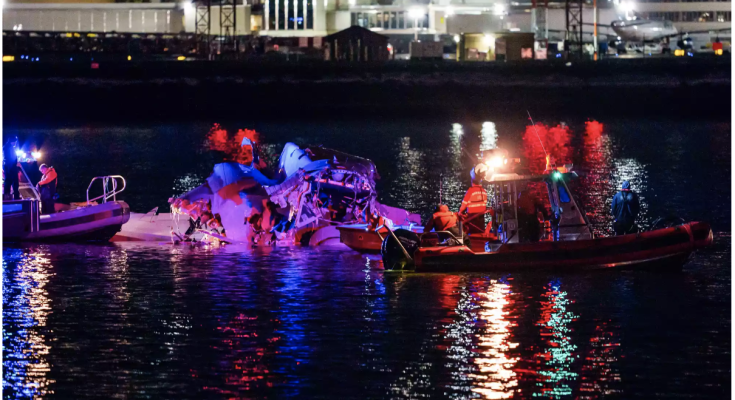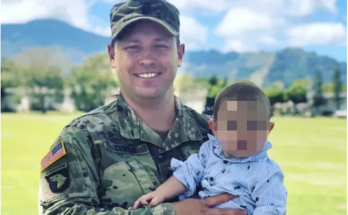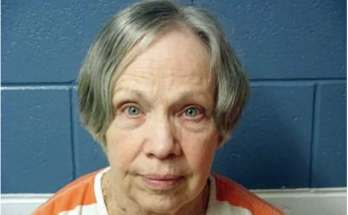In the wake of the worst aviation incident since 2001, as authorities hunt for answers, victims’ families share wrenching stories of love and loss
- On Jan. 29, a nightmare unfolded in the sky above the nation’s capital — the kind of aviation disaster that many believed no longer took place in the U.S.
- Authorities are searching for answers and say they have learned new details about the final moments before American Eagle Flight 5342 collided in mid-air with an Army helicopter
- Now comes the hardest part as family and friends of the 67 people whose lives were snuffed out in an instant are left to try to make sense of their loss
Spencer Lane had spent a thrilling few days at a prestigious training camp for rising young figure skaters when he and mom Christine boarded their flight out of Wichita, Kan., on Wednesday, Jan. 29. “I learned so much,” the 16-year-old from Barrington, R.I., shared with friends on social media that day, along with a photo of some of the “amazing people” he met.
His plane was still sitting on the tarmac when Spencer felt the need to capture one last memory, snapping a quick shot out his window of the wing beneath a slate-gray winter sky. The caption was brief: “ICT->DCA,” referring to the airports.
And then the boy, who in just three years had gone from stumbling on the ice to aspiring Olympian, headed home.
Some two and a half hours later a nightmare unfolded in the sky above the nation’s capital — the kind of aviation disaster that many believed no longer took place in the U.S.
American Eagle Flight 5342, operated by a subsidiary of American Airlines, was descending to land at Ronald Reagan Washington National Airport’s Runway 33 when it happened. The night was clear, and the lights of Washington, D.C., flickered below.
Looming in the distance, a Sikorsky UH-60 Black Hawk helicopter — in the midst of a training mission simulating the evacuation of government officials—was heading for the passenger jet.
“Do you have the CRJ [Flight 5342] in sight?” an air traffic controller asked, directing the smaller craft to pass around the jet. “Aircraft’s in sight,” a Black Hawk crew member responded.
Moments later, at 8:48 p.m., a fireball erupted above the Potomac River when the helicopter, for some reason, slammed into what looked to be the underside of the plane, which minutes earlier had been redirected to a new runway.
“The jet was traveling around 160 miles per hour, the helicopter was going 110 miles per hour. There was no time to think,” says Capt. Mike Coffield, a veteran commercial pilot and CEO of KM Cargo. “When they hit each other, they were both in the water two and a half seconds later.”
As the news began to break, Spencer’s friends, who had been devouring his training camp updates, grew worried and posted messages about hoping he was safe and would soon reply. But as the night unfolded, it became clear that the teen, along with his mom, 49, and the 62 other passengers and crew on the plane and the three soldiers on the helicopter, had been killed in the nation’s deadliest air crash since 2001.
Of the countless officials who weighed in on the tragedy — which claimed the lives of 11 child and teen figure skaters along with seven friends returning from a pheasant-hunting trip, a 12-year-old girl who had survived cancer and a college student who had just attended her grandfather’s funeral — U.S. Sen. Roger Marshall of Kansas summed it up most succinctly.
“There’s no words that can make telling this story any easier,” he said in a statement. Lane’s grief-stricken grandfather Wayne Conrad could only agree. “We’re still in a state of shock,” he says.
:max_bytes(150000):strip_icc():focal(999x0:1001x2):format(webp)/responders-in-the-river-with-wreckage-DC-plane-crash-020325-41aa1f2b9d9a487a901708c4f9a5d70a.jpg)
While authorities have continued the grim work of recovering bodies from the frigid Potomac (as of press time 55 had been found), investigators with the Federal Aviation Administration, the National Transportation Safety Board and the Army are seeking to uncover what caused such a calamity.
“This is an all-hands-on-deck event,” NTSB Chairman Jennifer Homendy told reporters of the quest for answers. “We’re here to assure the American people that we are going to leave no stone unturned in this investigation.”
Now comes the hardest part as family and friends of those whose lives were snuffed out in an instant are left to try to make sense of their loss. In the days since the crash Jessica Haynes’s grief occasionally slips into something that almost feels like acceptance. And then all the memories of her selfless and “super, super smart” 33-year-old sister Sarah Best — a math teacher turned attorney — come flooding back.
“I don’t know why she’s gone,” Haynes, 35, says of her sibling, who was returning home to Washington from a work trip and planning a long-delayed honeymoon to Hawaii. “It doesn’t make sense. She wanted to change the world, and she could have.”
Skater Maxim Naumov, 23, whom everyone called Max, lost both parents, 1994 world figure skating champions Vadim Naumov and Evgenia Shishkova, who went on to become coaches in America.
“[They] were glorious skaters,” says 2010 gold medalist Evan Lysacek. “Their talent and spirit live on in their exceptional and gifted son.” Katia Gordeeva, a former teammate of the couple, says Max has been with family friends “24 hours” a day in the wake of the incident. “Everyone is learning,” she says, “how deep the tragedy is.”
Ted Boyke — a childhood friend of 48-year-old Peter Livingston, who died alongside his wife, Donna, and their two skating-prodigy daughters Everly, 14, and 11-year-old Alydia; an entire family, gone — was also left grappling for answers. Peter was an avid hockey player and, says Boyke, a devoted dad who shared his girls’ passion for skating.
When Everly was born, Peter “talked about building an ice rink in the backyard and getting her started ice skating,” Boyke recalls, explaining how Peter covered a portion of his backyard with a tarp, boarded it off and filled it with water that would freeze in the Virginia winters. “I thought, ‘That’s incredible, but that will never work. How can you have an ice rink in your backyard?’ He not only did it, but then his daughters went on to be elite skaters.”
On the night of the collision Tim Lilley knew something was wrong when his 28-year-old son Sam, one of the pilots of Flight 5342, failed to check in with him after landing. “Everything was clicking for him,” says Sam’s dad, explaining how he was about to be promoted to captain and was planning to getting married in the fall.
A pilot himself, Tim, 58, finds comfort in the family’s faith: “I know I’m going to be able to fly with him again someday.” Asked what he thinks led to the collision, the Army veteran, who flew Black Hawks for two decades, says, “I don’t want to point the blame at anybody, but it looks to me like [Sam’s plane] was doing exactly what it was supposed to do on its path to land, and the helicopter made just a terrible mistake. And now there’s 67 terrible stories to tell.”
:max_bytes(150000):strip_icc():focal(499x0:501x2):format(webp)/investigators-with-black-boxes-020325-2147f2463bac46b39a59a52c88e33a0f.jpg)
Investigators hope to release a preliminary report on what caused the collision within 30 days, but a final report, with a probable-cause determination, could take up to a year or more. Experts have pointed to a range of broader problems: years of staffing shortages for air traffic controllers, an increasing number of near misses between planes nationwide that suggests the safety net is fraying — and the notorious congestion around Reagan National Airport, where jets and helicopters often fly in close proximity (a practice that was halted after the crash).
Lilley’s assessment of what went wrong is shared by others in the flying community. “I suspect it was basically pilot error,” says an Army helicopter pilot, who has investigated crashes in the past and requested to remain anonymous. The tower asked the Black Hawk crew if they saw the aircraft, explains the source, “and they said they saw it. But in the helicopter community we believe they were looking at the wrong plane.”
At a Feb. 1 briefing, NTSB Safety Board member Todd Inman said the plane’s flight data recorder revealed the collision occurred around 325 feet in the air, well above the 200-foot limit that helicopters are restricted to near the airport. The recorder also suggested that Flight 5342 became aware — at the last second — of what was about to happen and tried to get out of the way.
“The crew had a verbal reaction, and data showed the airplane beginning to increase its pitch,” Inman said. “Sounds of impact were audible about one second later, followed by the end of the recording.”
:max_bytes(150000):strip_icc():focal(999x0:1001x2):format(webp)/rose-on-the-banks-of-the-Potomac-020325-39771c7ac2f540918f3a65a1e69d5e59.jpg)
For anyone who knew and loved those killed in the crash, learning what factors ultimately caused it will at least partially answer the question of why this happened and help to prevent it in the future.
But those will be painful answers.
Speaking on Morning Joe after the collision, Capt. Chesley “Sully” Sullenberger — the pilot credited with saving 155 people aboard the “Miracle on the Hudson” flight in 2009 — said the history of aviation shows “we have learned from costly lessons, often bought with blood. And it’s important to always realize that as safe as we have made aviation, we can’t relax. We have to keep on working harder and anticipate the next challenge.”



